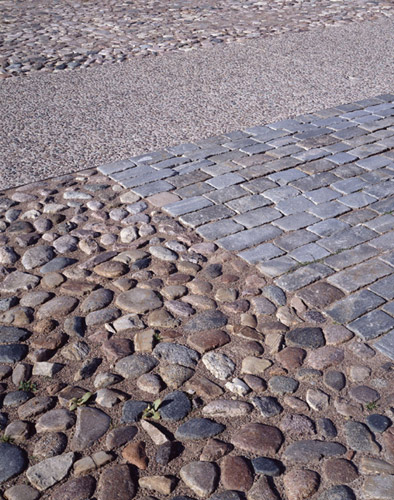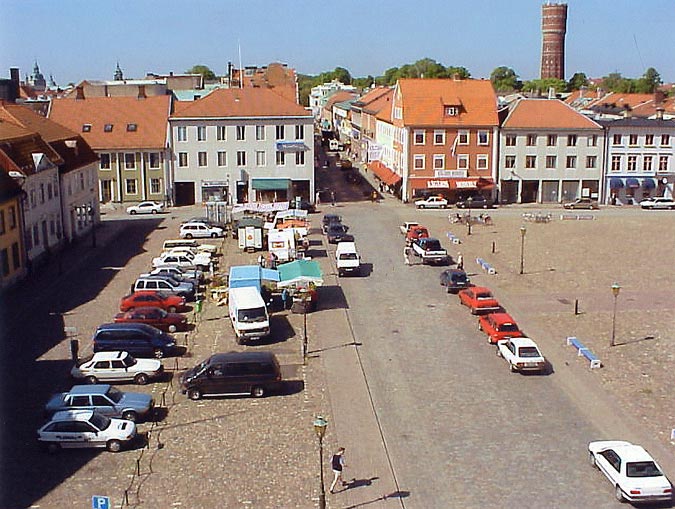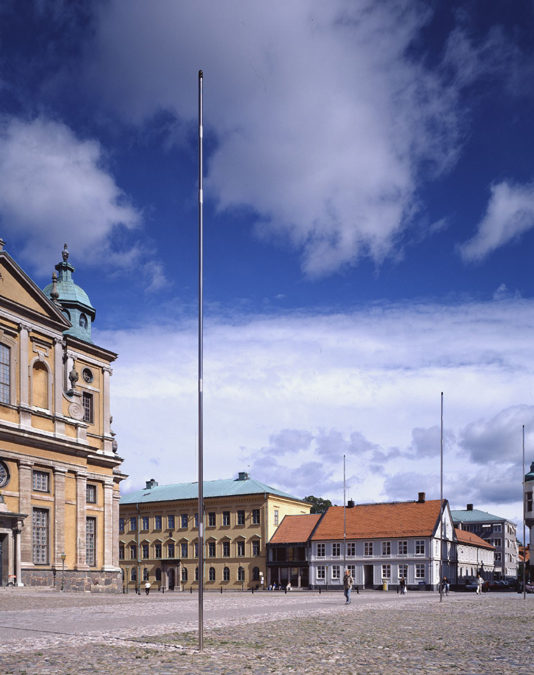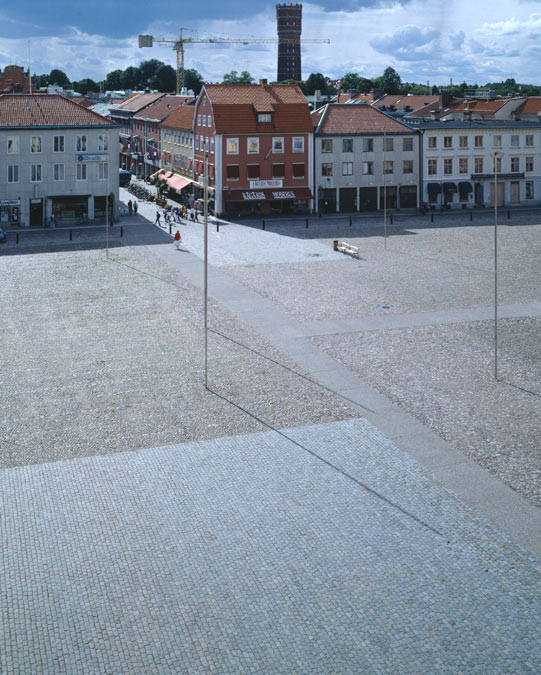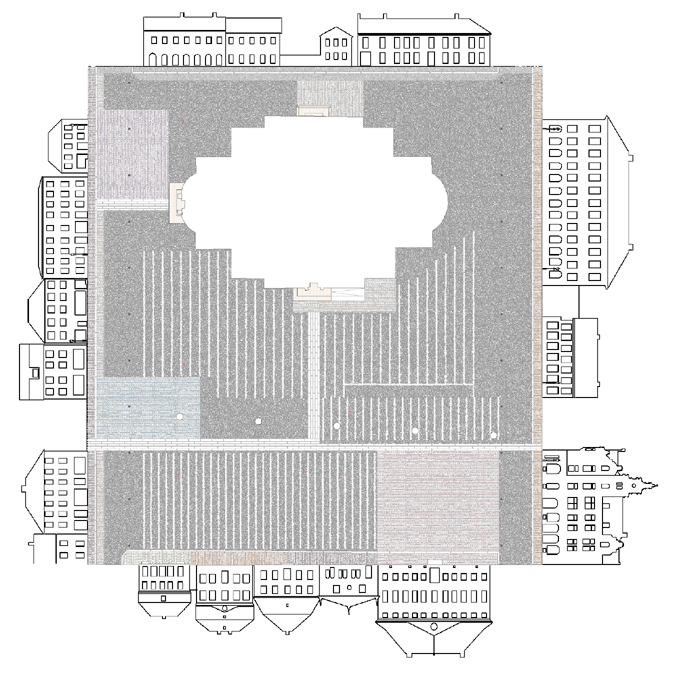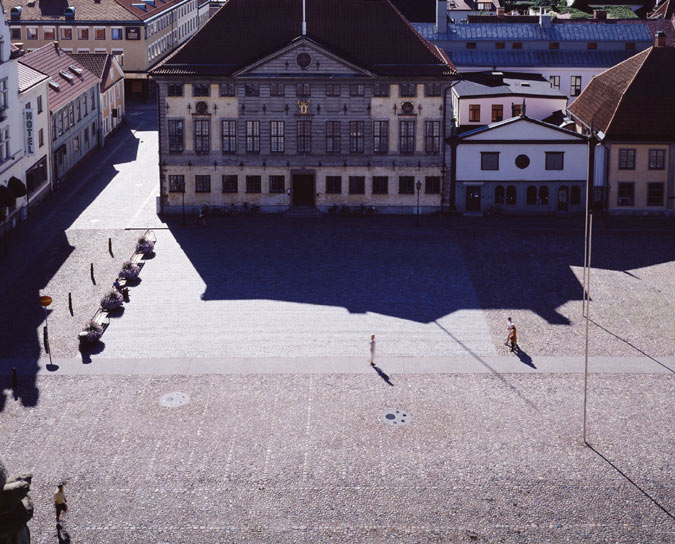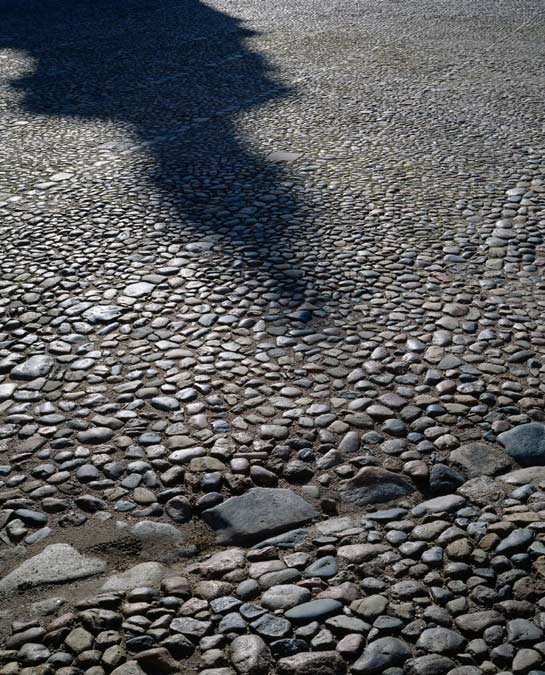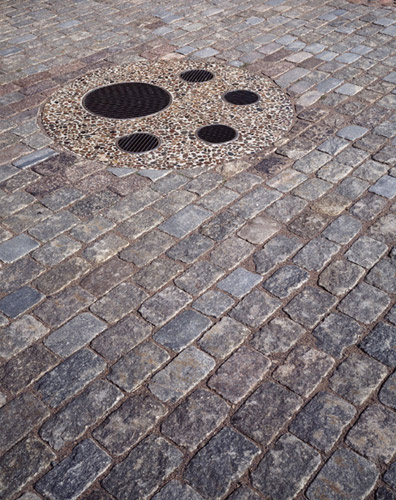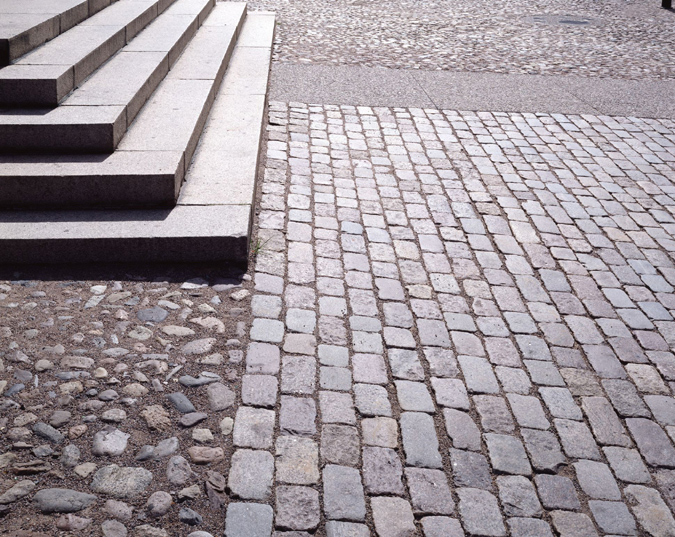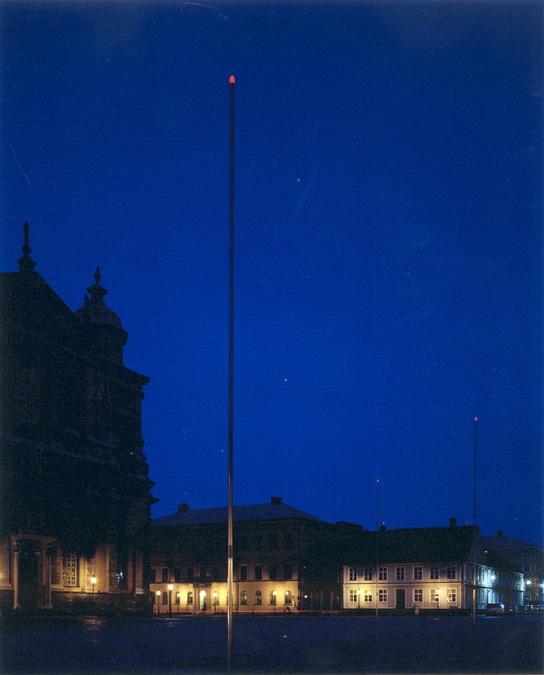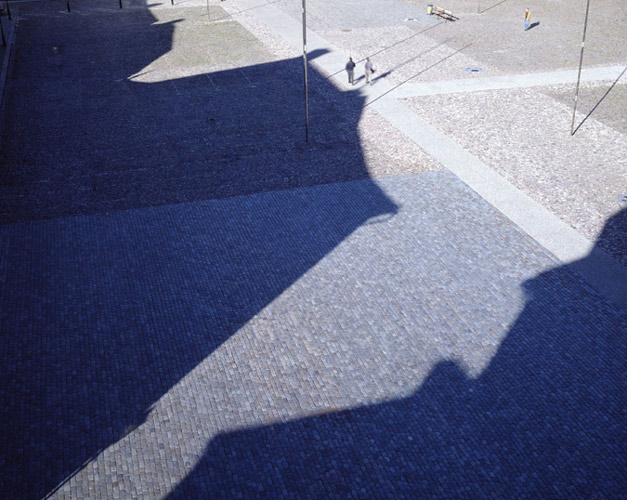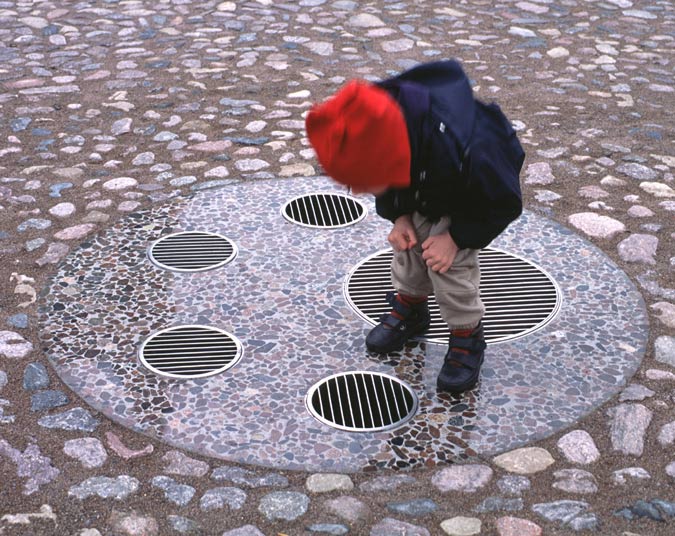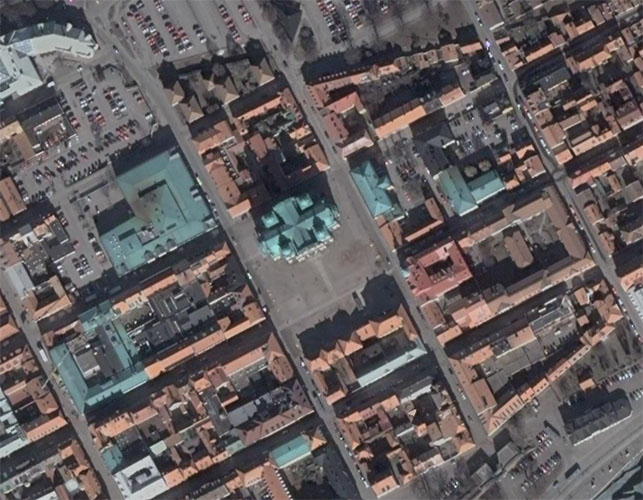Previous state
Kalmar is a small city in the south-west of Sweden, on the Baltic coast. The main square, called Stortorget [which means 'main square' in Swedish], is a large flat rectangle 90 metres wide and 110 metres long which surrounds the Baroque cathedral, a free standing building dating from 1702. Since then Stortoget has been a representative centre for the political, religious and military powers and the main setting for the trading and social exchanges of the city. Indeed, the history of the urban consolidation of Kalmar is written on these cobblestones in Stortorget. They are large, rough, uncarved stones brought in from the fields, used first to raise the dry stone walls around their edges and, shortly afterwards, to build the walls of the houses and to pave streets and squares. These stones have made up most of the paving of Stortorget for 300 years. Their variations in size, colour and texture distinguish them clearly from the homogeneous granite flagstones and kerbstones added to the square 80 years ago to differentiate pedestrian and vehicle areas until, in 2003, free parking was allowed.Aim of the intervention
In 1999 the Swedish Arts Council threw open an international competition whose purpose was to find a model solution for an imaginative renovation of a square of great importance for the history of the country. And so the renovation of Stortorget was not so much a product of the urgency of giving it a new use or improving its state of conservation as a will to confer on it the dignity it deserved for its special importance in the city. It was basically a matter of stripping it of everything superfluous and returning it to an original state characterised by the sober, undifferentiated emptiness of its large cobblestone plane.Description
The intervention begins by removing the granite flagstones and kerbstones added 80 years ago from the square, with the idea of reusing them in some other part of the city. Where the granite used to be, the patches paved with rough stone are completed, with new cobblestones that restore the overall flatness of the square. However, the new parts are resolved as dressings that are differentiated from the originals, thus forming a patchwork that recalls a marquetry or inlay board. Some of the new parts are filled in with matching pieces and others with large slabs of prefabricated concrete, coated with a layer of small granite pebbles in tonalities that blend with the original rough stones. In that way the grain and texture of the new patches make them look like miniatures of the original ones. From time to time the orthogonal shape of the marquetry table is broken by the incrustation of large round pieces with small circular grilles embedded in them. Through these grilles one can hear the sound of the underground water circulating through a system of interconnected wells which shows how close the water of the sea is.Assessment
Avoiding the technical difficulties and the conceptual impertinence that a literal imitation of the original paving would have meant, the intervention applies a contemporary constructive solution that completes the paving of the square by restoring it to flatness and continuity. In this way Stortorget both recovers its lost dignity and acquires a new and delicate play of cobblestone patches that makes it friendlier and more amusing.David Bravo Bordas, architect
[Last update: 02/05/2018]


